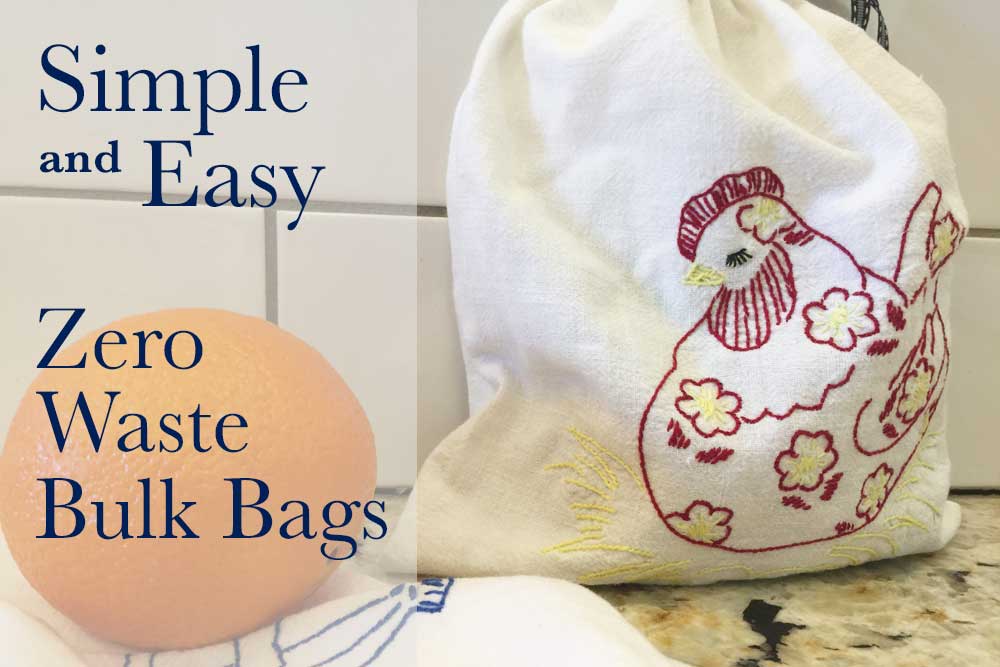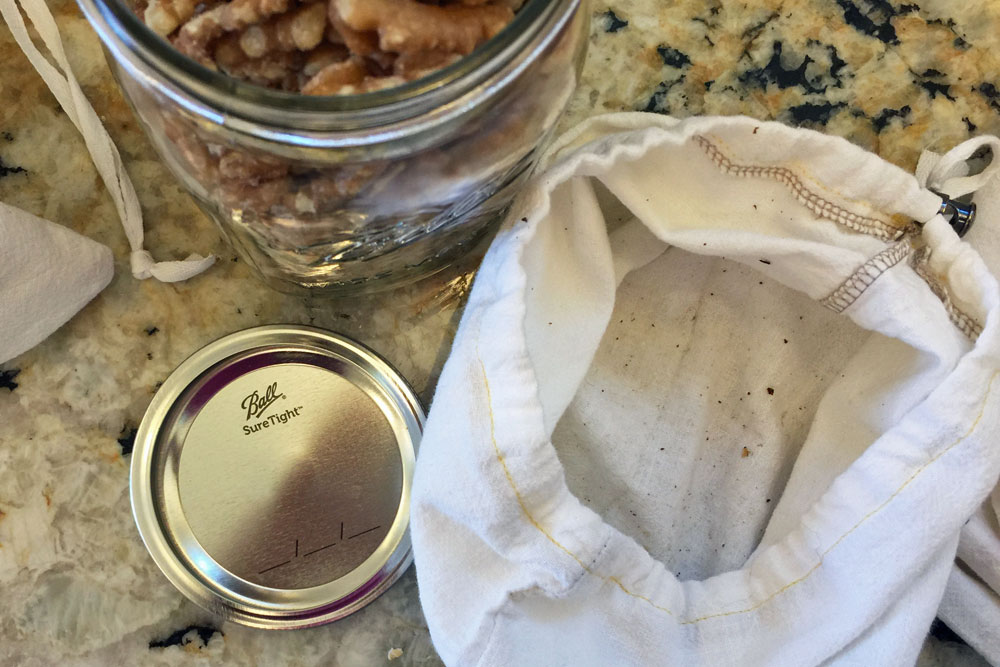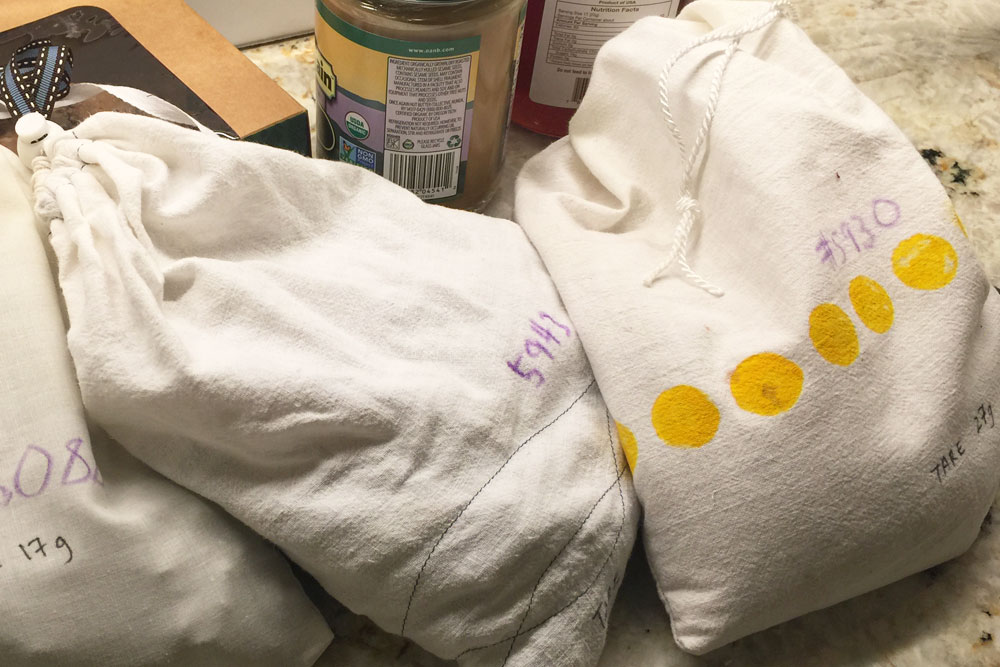
Why Cloth Bags?
A few months ago, maybe longer, my husband and I really took a good look at how much of our trash is food packaging.
We were kind of astounded how much of our food came in plastic bags; nuts, oats, granola, flours, frozen veg and fruit, prepackaged veg and fruit and even loose veg and fruit that I put in a plastic bag out of what, habit?
The obvious first and easy step was mesh bags for loose produce and bulk shopping for dry goods.
However, soon after I started shopping in the bulk section, I realized I wasn’t actually eliminating waste. I was using paper bags to transport
“Oh, I’ll just reuse them.”
That worked fine, for some bags; b

The Cloth Bags
I needed the mesh produce bags to be non-mesh bulk food bags. That was a simple enough project if not obvious. I mean, flour used to come in cloth bags; flour sack dresses? flour sack towels?
And that reminded me of all these old kitchen towels I was given but didn’t really use. They were quality towels, some even lovingly embroidered but stained and a little too sad to put out for use.
What stumped me for awhile was how to get a bin number on the bag without being wasteful – so no stickers or twist ties you write on. Besides not all stores offer stickers or twist ties.
And then – boom – I got it. What does the Zero Waste Home woman do? She uses a washable color crayon to write the bin number on her bags. Of course. That’s perfect. (Credit where credit is due: my big aha moment wasn’t figuring it out myself but googling it)
These bags are:
- Easy to use.
- Convenient to take along to the store (unlike jars).
- Easy & quick to make (especially if you have a serger).
- Are washable (toss them in with your towels. Stickiness and bin numbers wash right off)
- Can be made with scrap fabric.
- Can be made from repurposed fabric.
- Produce no waste.
This video will show how to make the bags both with a serger (so darn fast) and with a sewing machine (which will work for hand sewing too).
It will show how to get the tare weight on the bag and all the different things you already own that you can use for the drawstring.
This is a quick project and not meant to be perfect. I try to put the appropriate amount of sewing time into a project based on what the project is. A bulk food bag is a “quick & dirty” level project 😉
Enjoy your sewing time making your own set of bags, then enjoy the fact you’re not adding more plastic trash into our earth and seas.



Love this idea. Wonderful tutorial.
Thanks!Can’t wait to see your bags 😉 And I’ll share my crayons with you
How do these work at the checkout lane when they weight the bulk item? I wouldn’t want to pay extra for the weight of that toggle, not to mentions the fabric, each time I fill it with their merchandise.
good question. Weigh your finished bag on a food scale if you have one OR many stores will weigh your empty container/bags at the information desk/command station for you. If you weigh it yourself, write the weight on the bag with a sharpie marker. Measure in grams because that’s a decimal the cashier can put in as the tare weight (the weight of the packaging is called the tare weight). So if it weighs 32 grams the cashier puts in .32 as the weight to subtract. (be sure to write the unit of measurement you used) If the store weighs your containers they probably write the weight on a sticker and stick it to your bag/container.
For the bin number, I write that directly on the bag with a washable crayon (marker could leak through and onto your rice or oats). After shopping the bag goes in the wash with the towels. The sharpie stays on my bag and the bin number washes away. All ready to be used again.
Thank you. That makes a lot of sense. Thank you, too, for clarifying why one wouldn’t want to use the washable marker for the bin number; that was my first thought when you said crayon.